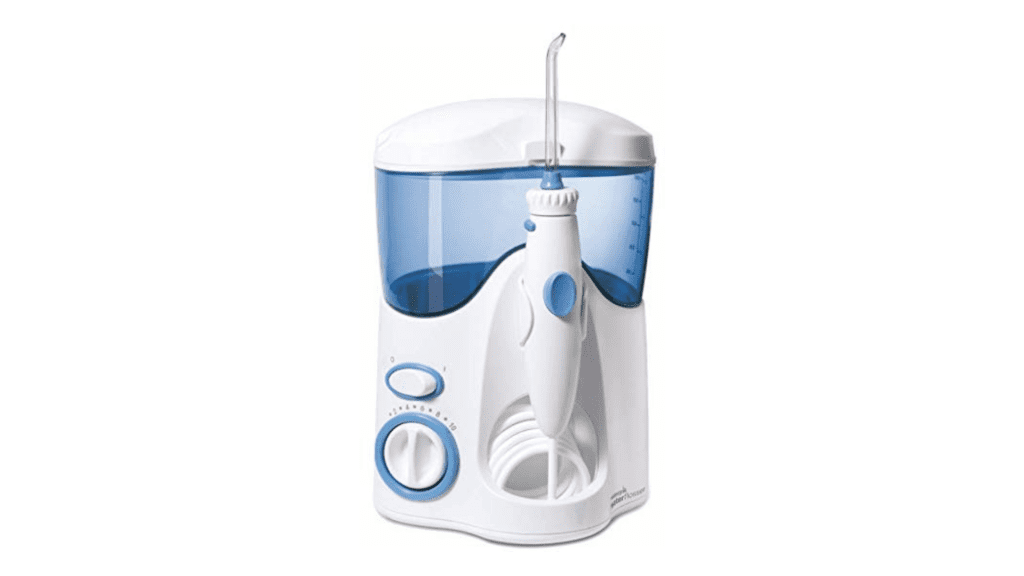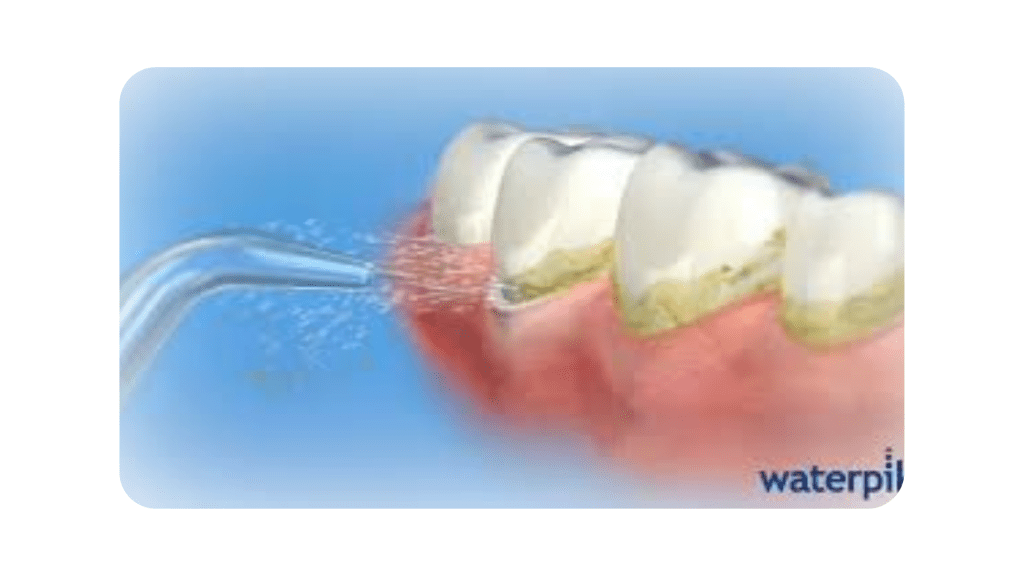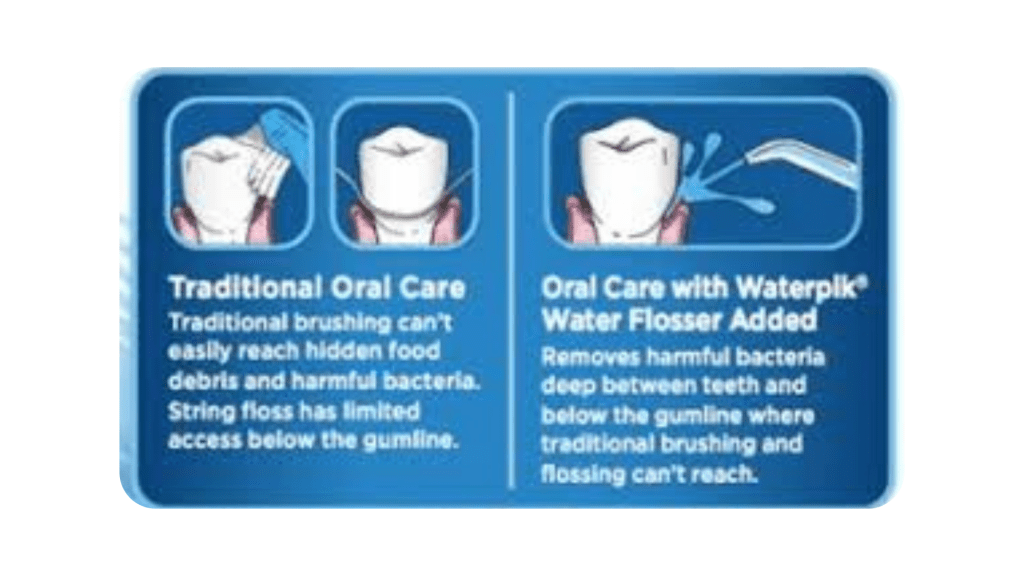
Waterpik or Floss? To keep one's mouth in good condition, flossing should be done on a daily basis, at the very least once. Did you know that the water flosser, which is more generally known as a waterpik, has been increasingly popular in recent times? Which of these two practices—using a waterpik or flossing—is more effective? Discover the answers to these questions, as well as other information on how to preserve your dental health, by reading this article.
Which method of flossing, using a Waterpik or the old-fashioned way, is better for the health of your mouth? In addition to brushing your teeth twice daily, flossing should be a part of your regular regimen for maintaining good oral hygiene. Because it enables you to remove food particles, plaque, and bacteria that are trapped in hard-to-reach locations in your mouth, getting in between your teeth is an essential step in the process of ensuring that you have good dental health. This is because it allows you to access areas of your mouth that are otherwise difficult to access.
Flossing, which is commonly done with a fine thread made of nylon or Teflon, is the most common way to clean the spaces in between a person's teeth and is considered the most effective method. This string is threaded between the teeth in order to loosen and remove any debris that has worked its way all the way up into the crevices of the teeth.
On the other hand, traditional dental floss is being gradually phased out in favor of the usage of the Waterpik, which is becoming increasingly popular. It accomplishes the same goals as traditional floss, but does so by employing a jet of water rather of the floss itself. Which one do you think would be the most beneficial to you in the long run?

When you use a Waterpik to clean your teeth, the device applies pressure on the water before releasing it. This helps remove plaque and tartar from your teeth. The water helps flush out food residue that has accumulated between your teeth and along the gumline, as well as stimulates your gums and makes them more responsive.
Water flossers, such as Waterpiks and other variants, can be of tremendous assistance to people who struggle with any of the following conditions:
Because they are more compact than traditional floss, water flossers are much simpler to use in and around orthodontic appliances, including as braces. When compared to string floss, using dental wax reduces or eliminates the risk of something being lodged in the brackets and wires of your orthodontic appliances.
Oral irrigators like Waterpiks, which come with a variety of pressure settings, allow for a degree of customization in terms of how they are utilized. This gives you the ability to choose the pressure that is most conducive to your desired level of comfort. If you suffer from sensitive gums, you will find this advantage to be really beneficial.
What are some of the drawbacks associated with using a Waterpik?

It is possible that the water pressure provided by the Waterpik will not always be sufficient to completely remove the plaque that has accumulated on your teeth. There is a common misconception that using floss prior to using a Waterpik can give superior results.
The cost of a Waterpik is substantially higher than the cost of the more conventional form of floss, string. In the same way that other kinds of water flossers do, using a Waterpik necessitates that you have availability to both a source of running water and an electrical outlet. As a consequence of this, making use of them while traveling may not be the most convenient option.
Dentists — do they recommend the use of Waterpiks?
Plaque that has accumulated on the surface of your teeth might be difficult to remove, but using a Waterpik, as recommended by the American Dental Association, can assist you in doing so. However, the vast majority of dental practitioners continue to recommend utilizing string floss rather than water flossers whenever it is at all possible.
If I use a Waterpik, will it be harmful to my gums and teeth in any way?
Your oral health will not suffer in any way as a result of utilizing a Waterpik, as doing so is totally risk-free and won't bring about any adverse effects. In point of fact, drinking water does not put the same amount of pressure on your gums as does flossing. When compared to the more common practice of flossing with string, this implies that using a water flosser results in a lower rate of bleeding gums than the typical method of flossing with string.
When using a water flosser for an extended period of time, if you experience any bleeding, swelling, or discomfort, you should contact your dentist as soon as possible to make an appointment. Keep in mind that if you haven't been regularly flossing your teeth, using a Waterpik for the first time may cause you to experience some discomfort that could last for up to two weeks. This is due to the fact that it takes some time for your gums to get used to the activity of the Waterpik before you can successfully utilize it.

Flossing
Water flossing is a very recent innovation in comparison to the more conventional method of flossing with string, which dates back many centuries. Originally made from unwaxed silk, floss is now also available in nylon and Teflon varieties.
Waxed floss and unwaxed floss are the two varieties of dental floss that are sold commercially. If you find that after utilizing floss you frequently are unable to remove it from in between your teeth, you should examine the type of floss that you are employing. It is recommended that you convert to waxed floss if you are currently using floss that is not waxed. In addition, floss can be purchased in a variety of flavors. The flavoring can also make the mouth feel and taste fresher after flossing, which can make the activity more appealing to children and other people who struggle to maintain good oral hygiene habits.
Everyone should make flossing their teeth a consistent part of their routine in order to ensure that they have healthy teeth and gums. Everyone should make it a point to floss their teeth at least once every single day at the bare minimum. You should only use a water flosser, such as a Waterpik or another type of water flosser, in addition to your normal routine of cleaning your teeth and flossing them. This is still the case even if you are able to floss your teeth without risking injury. Because it was not designed to perform that function, you shouldn't use it as a replacement for string flossing unless you really don't have any other choice.
What are some of the benefits associated with using dental floss?

When should I floss, just after I brush my teeth, or before?
Before you clean your teeth, it is highly recommended that you floss in between each one. After you have finished flossing, you should thoroughly rinse your mouth with water. After you are finished, doing so will assist in the removal of any plaque or other material that may still be present in your mouth.
In the event that you do, the order in which you use a Waterpik and string floss is quite important. To get started, it is recommended that you use string floss. Plaque and food particles will be simpler to remove as a direct consequence of this. After you have finished flossing with string, you should rinse out your mouth and then clean your teeth. After that, you can floss your teeth. This will assist in the removal of any stains as well as any plaque that may still be present. After you are finished, use your Waterpik to thoroughly clean both the inside and outside of your mouth.
When flossing your teeth with string, you should begin by circling your mouth with around 18 inches of the floss and working it in a clockwise direction. You will need to use both hands to manipulate the string in order to create a C pattern with it on and between your teeth. Because of this, removing the plaque will be much less difficult.
If you are using a Waterpik or some other type of water flosser, the first thing you need to do is fill the reservoir with water that is slightly warmer than the temperature in the room. After that, the Waterpik mouthpiece will be positioned within the oral cavity of the user. After turning the device on, you need to make sure that the handle is held in that position so that it is parallel to your teeth. When you start the misting process, the nozzle will begin to expel a steady stream of water. You are going to have an easier time cleaning in between your teeth as a result of this.
If you have never used a Waterpik before, it is possible that it will take you some time to determine the temperature and pressure settings that will provide you with the most comfortable experience. When utilizing the Waterpik, begin at the back of the device and work your way forward. You should begin at the back of your throat and work your way forward into your mouth. When you brush your teeth, you should pay particular attention to the gum line, the top of each tooth, the back of each tooth, and any spaces that exist between the teeth. This will ensure that the space is clean throughout.
The process of flossing your teeth with water should take you close to two minutes to complete. Be sure to empty the reservoir in the sink if there is any additional water that has been left in the reservoir after it has been used. As a direct consequence of this, the Waterpik will not serve as an ideal environment for the growth of germs.
The following are some observations and judgments:
If you have any questions or concerns about using string floss, you should make an appointment with Summerlin Dental Solutions as soon as you can. If you have any conditions that prevent you from using traditional floss, such as braces or arthritis, they will be able to assist you in finding alternatives to utilizing floss in its traditional form. If the use of string floss is not an option for you, they will also be able to assist you in getting the most out of your Waterpik and provide you with instructions on how to do so if you need their assistance.
CLICK HERE TO SCHEDULE YOUR APPOINTMENT!
GET TO KNOW YOUR BEST DENTIST IN SUMMERLIN
Dr. Marianne Cohan was voted The Best Dentist/ Dental Office and Best Cosmetic Dentist from The Las Vegas Review-Journal in 2020 and 2021. She received her Doctor of Dental Surgery (DDS) from the State University of New York at Buffalo in 1992.

With an emphasis on cosmetic dentistry, complete makeovers, and implant dentistry, Dr. Cohan is committed to continuing education and feels that we never stop learning. Dr. Cohan takes pride in using high-powered magnification to perform minimally invasive restorative dentistry. She uses all the latest technological advances including digital radiography, digital photography, computer simulations, and high-resolution pictures of your proposed treatment on 55-inch screens. She also utilizes CBCT (cone beam) and laser technology.
Dr. Cohan is always available to her patients and is available for any dental emergency.